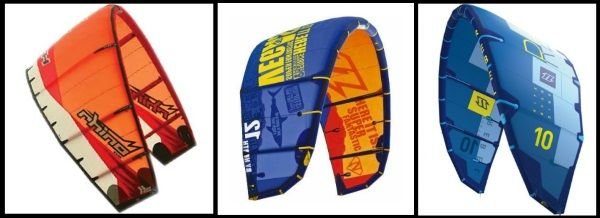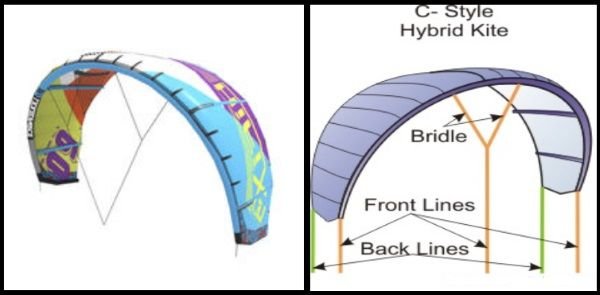Relaunch a kite from the water. We will see in this blog entry how to relaunch a kite from the water, for this we have a sequence of photos as well.

In theory, all tube kites can be relaunched from the water, some more easily others not so much but they should also fly again from the water where they were floating.
Obviously the blog entry refers to standar tube kites or inflatables. The relaunch of foil kites will be uploaded another time. Well, continuing with the tube kites, from the old type C kites to the last tube kite models all are relaunchable since the most part of it is depending on their shape and design.
The names of the last released tube kites was something like Delta flat, as they change name quite often, the question is, however, they all will relaunch and fly again, with the proper technique and the amount of wind needed, of course.
In those old type C tube kites, the relaunch was much harder because the tips of the kite were square, that is, they ended at an angle of 90 degrees, so when pulling one of the lateral lines, the resistance of the kite to turn on that floating point was such that there was no way to make it flip around-that’s why the 5th line had to be invented.

Of these three kites in the photo above, we have firstly the North Rhino 4 model on the left.
It is appreciated the square tip angles which made difficult the relaunching. This kite followed the model Rhino 5, which repeated the design basically of the previous Rhino 4 but with just minimal variations. I was the owner of one of those … to, in short, discover that in the Vegas model, also from North which is the photo next to it, relaunch was much easier due to the round shape tips.
That was a revolution because although the Vegas 2 went on sale 2 months after the Rhino 5, it was then when it came to relaunch so easily from the water, but not only that, because those rounded leading edge kite tips gave the kite three or four knots extra of wind range in the upper side of the wind window, and that was great news, therefore, many of us stopped using Rhinos and definitely opted for the Vegas model to the detriment of the Rhino model which saw its last model that year.
Vegas was the freestyle kite while the Rhino was the kite that North oriented for the big jumps, which was what I was looking for. All this happened in April-May of the year 2006.
But going a bit back to August 2005, Cabrinha was the first brand to bring Mr. Legainoux’s experiments into a commercial way and that’s when the Bow kites arrived to the market. Anyone who remembers that time, will have in mind the sharp tips of the kite and how pulling the side line the kite rised and flew again relaunching from 180 degrees, or full power zone and without having to move the kite to the edge of the wind window like all the kites until then and also after again.

This model of kite was quickly followed by Naish’s SLE, since the revolution of the bows raised blisters on all brands which refused to accept the bows, that is, they labeled us as cowards while “real men”, the real kiters, prefered only type C freestyle tube kites, which is, something like what windsurfers said about kitesurfing when the new sport arrived.

Those two kites over this lines are the Takoon Nova and the GK with its opposite design to the bat shape’s of Naish Helix -which can be seen in the video under-, which were followed also in 2007 by the first and only real Ultraflat kite, Fluid’s Torque from Autralia, of which I was a user for the next 3 years until its extinction -see the last part of the photo above.
Yet in 2007 and 2008 also came the Takoon E-Nova and the Slingshot Turbo and Turbo 2 which could be used as with pulleys in the bar or in the standar setting.
North, which had resisted for one more year to start producing other than Rhino and Vegas made us wait for the Rebel, with which, even with a very simple bridle, the brand joined the fleet of kites with sharp edges, called by then, hybrids, meaning that they didn’t want to accept to be regarded as bows, remaining as the only bows the Crossbow of Cabrinha. We can see a photo of the Rebel on the right side of the first uploaded photo, together with the Rhino 4 and the Vegas 2006.

Later by the end of 2006, Naish began producing its SLE design for one year, then, the hybrid type of tube kites arrived. After that in 2008 we had the release of F-one Bandit 1 and in the following years they developped different models very similar all of them described as the Delta and Delta flat types.
Other brands after some years, returned to the C type design but already with briddles in that case, keeping the Vegas and Torch models, designed for freeslylers up until nowadays.
Relaunch a kite from the water
But let’s go back to the relaunch thopic, which was the original reason of this post. In fact, I would rather make two groups of tube kites, those which by pulling the bar towards you, you had to grab a sideline from the farthest and pull continuously until it turned on its tip, there you turned the bar to the new position of the kite, until the kite started flying as you let the bar go upwards. And the second type of tube kites, in which there was no need to pull the bar all the way down to you and just by pulling a side line, the kite was already turning around and relaunching.

But still, in those two groups, there were two variants for relaunch a kite from the water, those which were relaunched in power zone and, those tube kites like the Deltas and some C with bridles, which had to travel all the way to 90 degrees on the wind window, so that they would fly.

Even so, this had its trick, in all cases, because basically, the kite had to go to power zone to fill with enough air pressure inside and then start the process of relaunching whatever was the case in particular.

Anyway, if the kite is not relaunching, most times is because there’s not enough wind, and in that case the solution is to move towards the kite quickly -as much as the situation would allow.

Logically, it is not the same to be standing on the water than to be floating, in which case you should have to swim towards the kite until the kite would fell on its back, so when pulling the lateral line, it would travel to 90 degrees and relaunch.
The uploaded photos can give an idea of how that process works, considering that in our case, to go forward towards the kite was not an issue, considering that our guy was standing on his feet, while when the case was to be floating it would suposse a much complicated situation.

You should also keep in mind that when moving forward towards the kite, the kite could fall backwards turning twice, with what the lines would cross and although it should still be possible to relaunch it, it would complicate things greatly.
After my first 11 years of kitesurfing with tube kites, alternating for the last couple of years with Peter Lynn – foil kites- In 2009 I opted for Flysurfer’s kite foils, with which I had 0 problems of re-launching.
Though I must admit, for what it is worth A tube kite is definitely great to protect you from sun exposure, and even better if that includes a couple of girl friends like the ones in the photo. Isn’t it?
